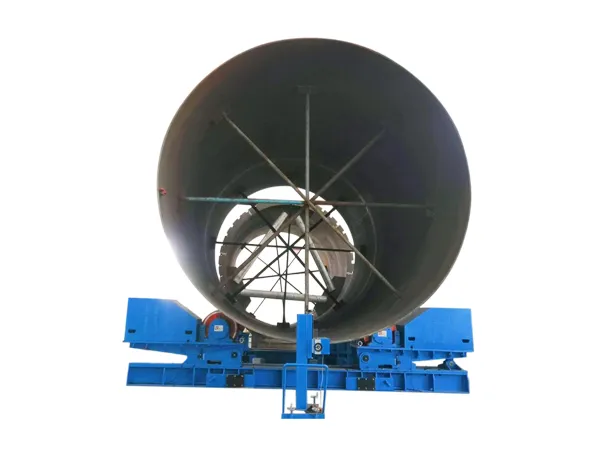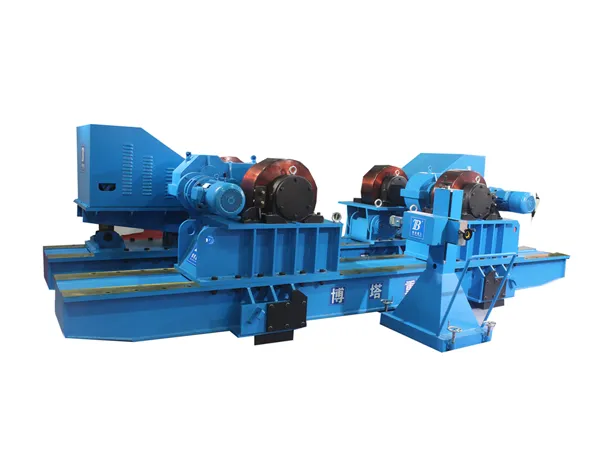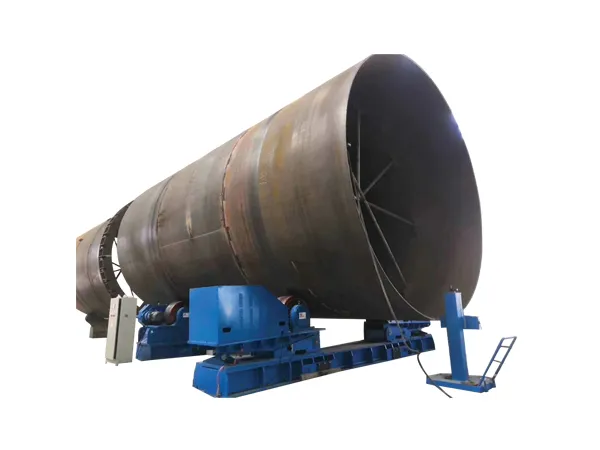Welding rotators are essential equipment used in various industries for rotating cylindrical workpieces during welding or fabrication processes. The production process for welding rotators typically involves several key steps.

Design and Engineering
Begin with designing the welding rotator based on customer requirements, taking into account the size and weight of the workpieces to be rotated.
Consider factors such as load capacity, rotation speed, and the diameter range of workpieces.
Material Selection
Choose materials with high strength and durability for the main frame and rotating components. Common materials include steel alloys.
Cutting and Shaping
Use cutting machines, such as plasma or laser cutters, to shape the main components of the rotator, including the base, frame, and rotating rolls.
Welding
Assemble the cut components and weld them together using various welding techniques, such as MIG (Metal Inert Gas) or TIG (Tungsten Inert Gas) welding.
Ensure proper alignment and structural integrity during the welding process.

Surface Treatment
Perform surface treatment processes to enhance the corrosion resistance and appearance of the welding rotator.
Common surface treatments include sandblasting, painting, or applying protective coatings.
Assembly:
Assemble the different components of the welding rotator, including the base, frame, and rotating rolls, ensuring that all parts fit together securely.
Installation of Drive Systems
Install the drive systems, including motors and gearboxes, that will be responsible for rotating the workpiece.
Ensure proper alignment and calibration of the drive systems.
Quality Control and Testing
Conduct thorough quality control inspections to check for weld quality, structural integrity, and proper functioning of the rotating mechanism.
Perform load testing to ensure the welding rotator can handle the specified workpiece weight.

Documentation and Certification
Prepare documentation such as user manuals, safety guidelines, and certification documents.
Ensure that the welding rotator complies with industry standards and regulations.
Packaging and Shipping
Package the welding rotator securely for transportation, taking into consideration its size and weight.
Ship the finished product to the customer or distribution center.
Throughout the entire production process, it's essential to adhere to industry standards and safety regulations to ensure the quality and reliability of the welding rotator. Additionally, continuous improvement and feedback mechanisms should be in place to refine the manufacturing process and address any issues that may arise.
No. 1 Intersection of Chuangye Avenue and Weilai Avenue,
Yiyang County,Luoyang City, Henan Province, China
+86 400-0379-069
Copyright © 2023 An Automated Welding and Cutting Equipment Manufacturer Focusing on Welding Column Boom and Welding Rotator | All Rights Reserved Technical support: ShangXian